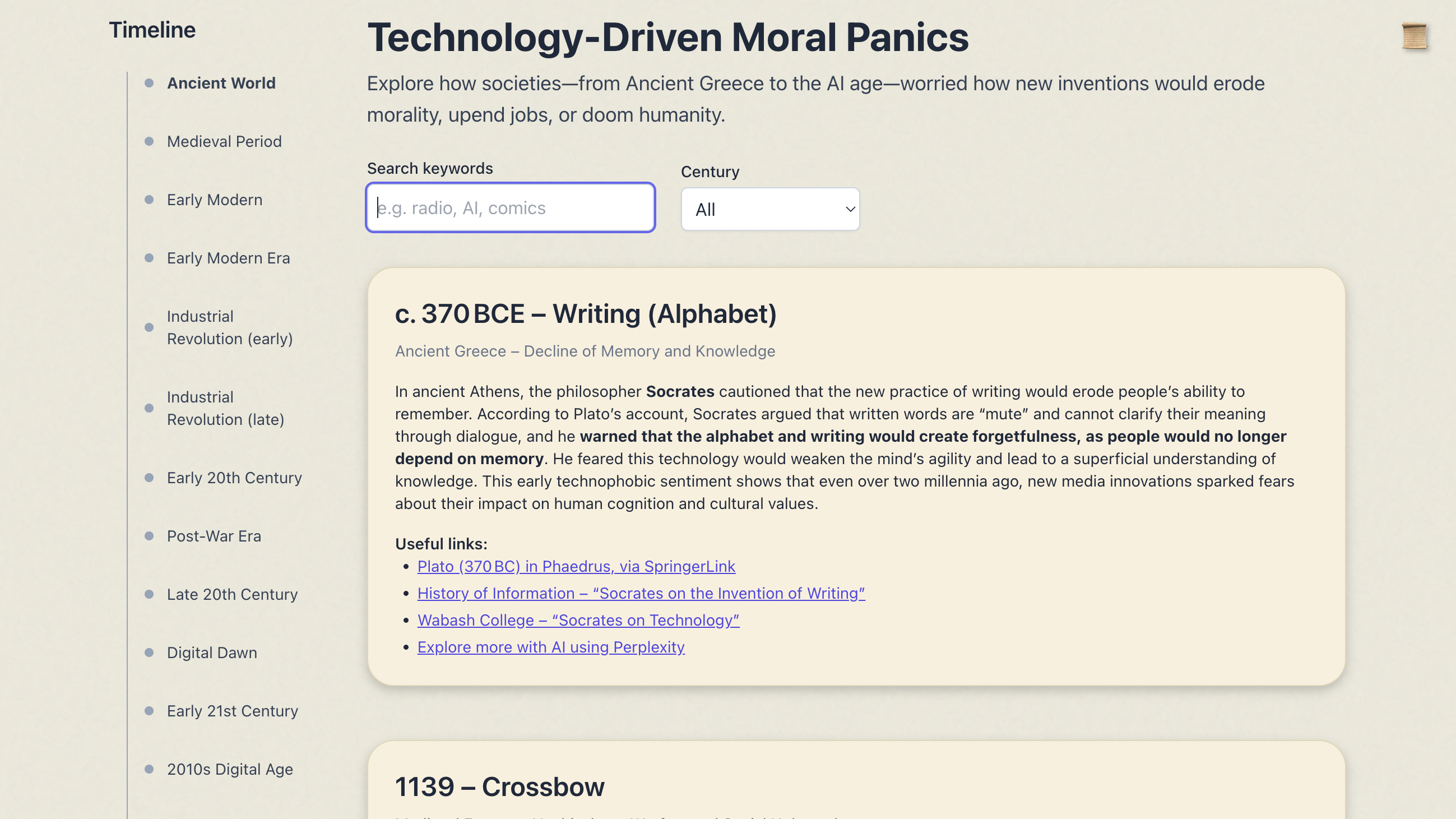Not a panic about vibe coding, but an idle thought that led down a rabbit hole that turned into an online timeline on tech driven angst through the ages
This is more of a pre-vacation ramble than a full blown article. But I’m going with it anyway as I’m half way across the Atlantic and and heading toward three blissful unplugged weeks of vacation — and wanted to get something up before taking a short break from this Substack.
Plus, I’m having more fun than I suspect is proper “vibe coding” with ChatGPT!
Working in tech, society and the future, I’m no stranger to past examples of seemingly foolish moral angst and outrage over transformative emerging technologies. And yet I inevitably find that, when I need good examples to draw on, there’s a surprising dearth of simple websites that provide insights into tech-driven moral panic down the ages.
And so in an idle moment over coffee I thought I’d “vibe code” one into existence.
This was only ever meant to be a 5 minute personal distraction. But as the vibe coded timeline grew, it sort of sucked me in.
For the uninitiated, “vibe coding” is new and trendy approach to coding2 where you tell an AI agent what you want to do in plain language, and the AI proceeds to spit out the relevant lines of code. It’s all about telling AI what you want — even if you’ve never coded in your life — and the AI translating this into something that’s executable.3
It’s a seductively dangerous slippery slope for people who don’t program for a living as, to be completely candid, the resulting code is about as reliable as the stuff amateurs like myself were churning out back in the 1980’s.
But therein also lies its charm for someone like me, as it gives me the chance to play with coding in a way that I haven’t been able to since those selfsame 80’s.
Back to my coffee-fueled idle moment though. Once again finding myself frustrated at the lack of an online timeline that did what I wanted, I asked ChatGPT to whistle up some code for a web page which displayed key moments in the history of technological moral panic on a simple interactive timeline — along with explanatory text that reflected my own work on tech and society.
24 hours later I realized that I probably shouldn’t have assumed this would be a 5 minute job!
The more I got into the coding and the content, the more useful I found the emerging website — to the extent that I thought it worth purchasing a relevant domain (techlashed.org — and yes, I was feeling a little tongue in cheek at the time) and unleashing it on the world …
Related:
More on artificial intelligence at ASU.



